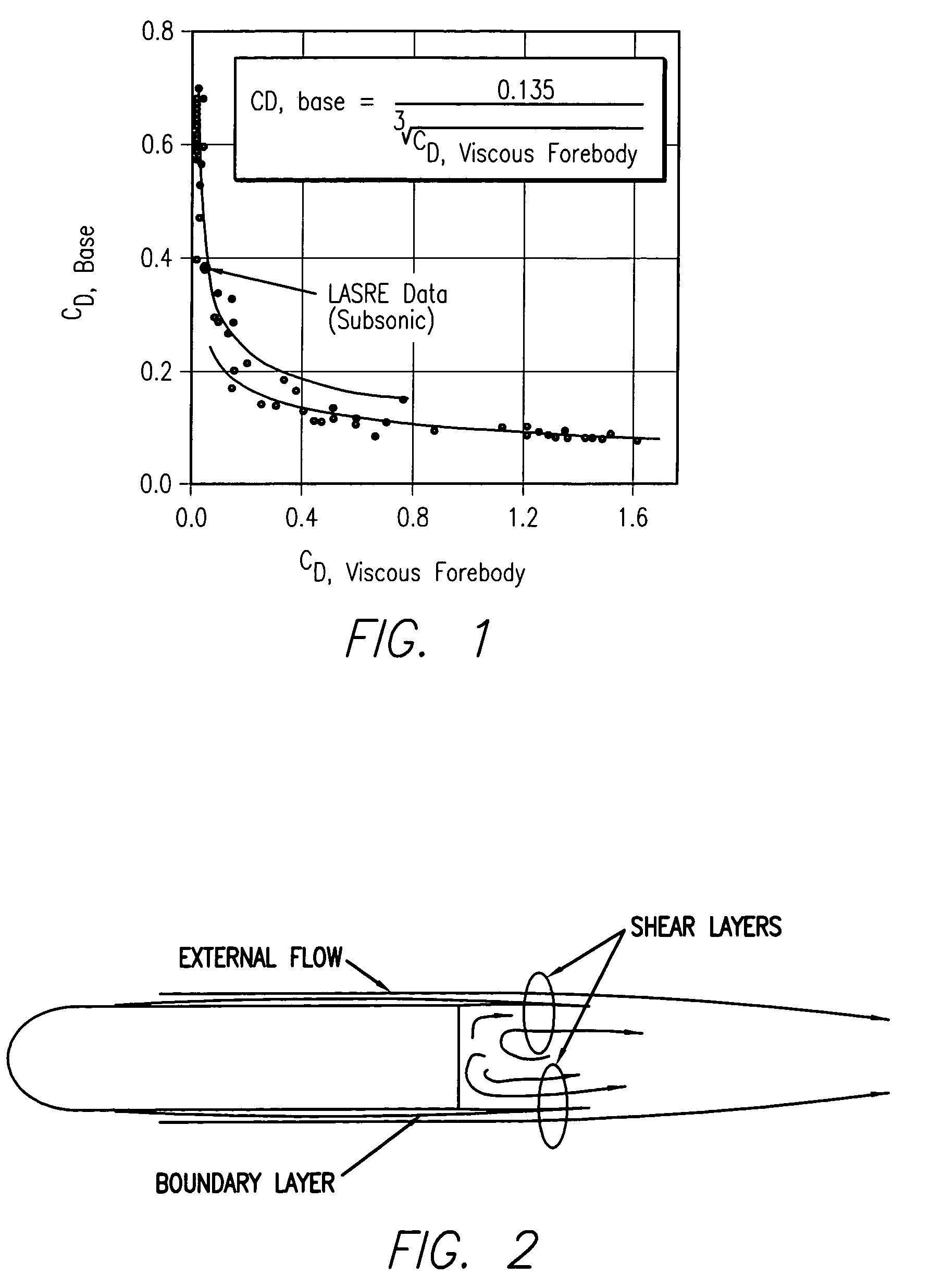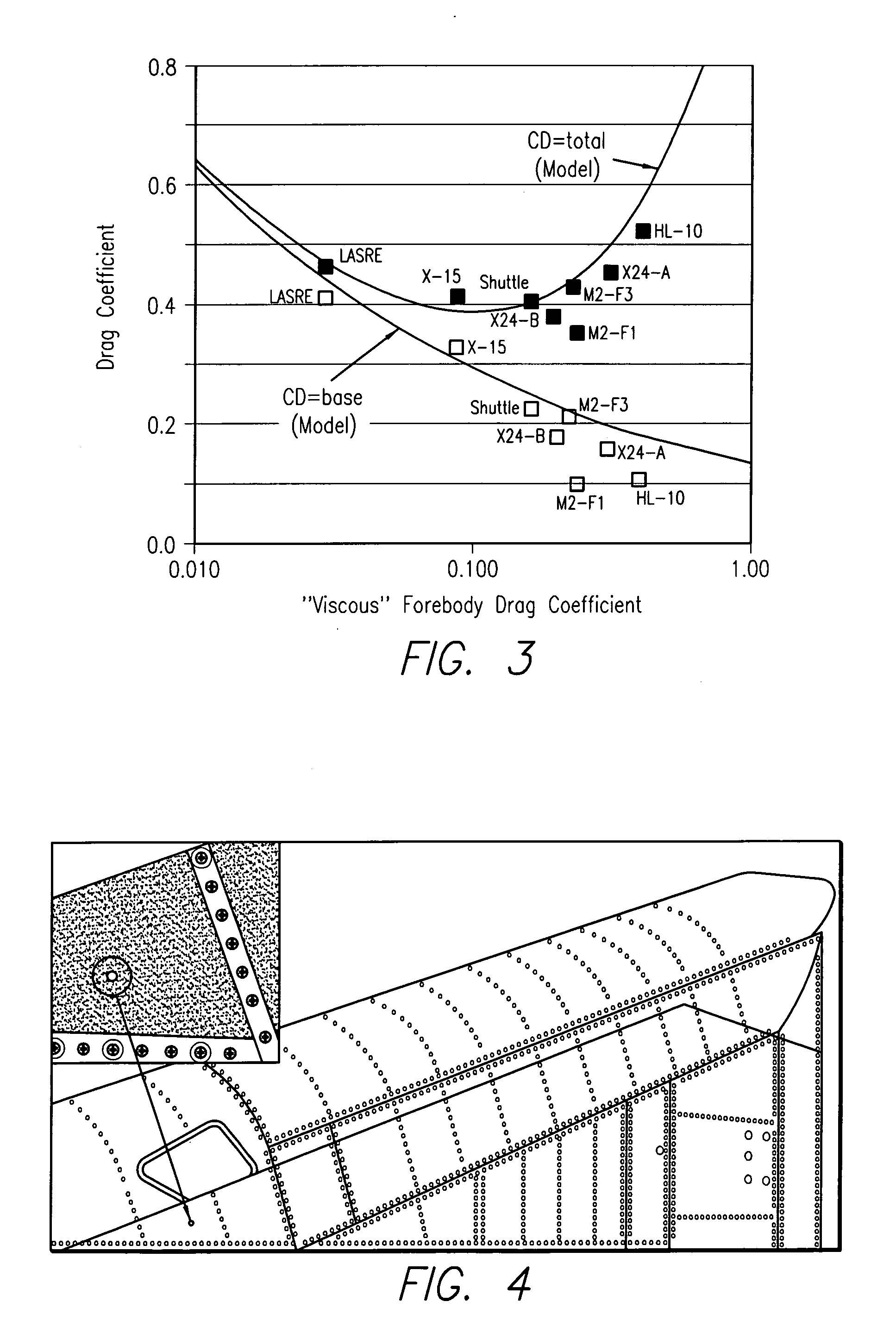Method for reducing the drag of blunt-based vehicles by adaptively increasing forebody roughness
a technology of forebody roughness and adaptive increase, which is applied in the direction of cosmonautic vehicles, automatic actuation, air-flow influencers, etc., can solve the problems of base drag, expected to be very large, dominating or overwhelming all other factors relevant to vehicle performance, etc., to reduce the drag of a vehicle, increase the effect of drag
- Summary
- Abstract
- Description
- Claims
- Application Information
AI Technical Summary
Benefits of technology
Problems solved by technology
Method used
Image
Examples
Embodiment Construction
)
[0021]The detailed description set forth below in connection with the appended drawings is intended as a description of presently preferred embodiments of the invention and is not intended to represent the only forms in which the present invention may be constructed and / or utilized. The description sets forth the functions and the sequence of steps for constructing and operating the invention in connection with the illustrated embodiments. However, it is to be understood that the same or equivalent functions and sequences may be accomplished by different embodiments that are also intended to be encompassed within the spirit and scope of the invention.
[0022]Drag reduction tests were conducted on the LASRE / X-33 flight experiment, a roughly 20% scale model of an X-33 forebody with a single aerospike engine at the rear. The experiment apparatus was mounted on top of an SR-71 aircraft. The tests investigated a novel method for reducing base drag by adding surface roughness along the LAS...
PUM
 Login to View More
Login to View More Abstract
Description
Claims
Application Information
 Login to View More
Login to View More - R&D
- Intellectual Property
- Life Sciences
- Materials
- Tech Scout
- Unparalleled Data Quality
- Higher Quality Content
- 60% Fewer Hallucinations
Browse by: Latest US Patents, China's latest patents, Technical Efficacy Thesaurus, Application Domain, Technology Topic, Popular Technical Reports.
© 2025 PatSnap. All rights reserved.Legal|Privacy policy|Modern Slavery Act Transparency Statement|Sitemap|About US| Contact US: help@patsnap.com



